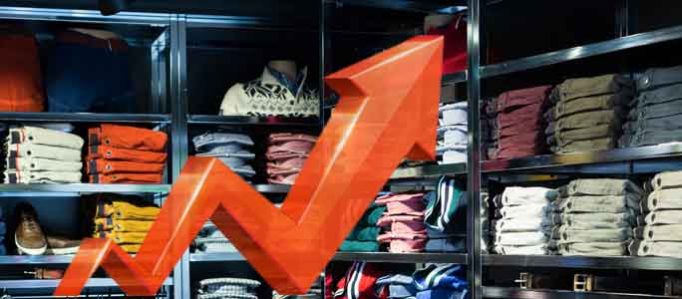
ROI’s give a true picture of how a business is doing actually. There are different ways in which a retailer can estimate its return on investment.
The investment can be in the form of capital invested on inventory, labour, rent, IT tool employed etc. in your retail store.
‘Retail Math’ is the tool that helps in calculating and analysing parameters such as GMROF, GMROII, and GMROL.
GMROF stands for Gross Margin Return on Footage- a tool that shows the relationship between total sales corresponding to per square feet area of your store.
GMROF = GM% x (Sales* / Sq.Ft.) *Sales for corresponding area & time frame
Whereas, GMROII and GMROL stands for Gross Margin Return on Inventory Investment and Gross Margin Return on Labour respectively.
While, GMROII depicts the relationship between inventory productivity and the gross profit margin you earn on those sales, GMROL expresses the relationship between your gross margin, and the money spent in full time labourers.
GMROF is one of the most widely used metrics for retail inventory management. It shows how much gross profit per square feet inventory investment brings to the retailer’s pocket.
The metrics help to compare product categories, shelf design, department wise layout, and product display optimizations.
The knowledge of retail math is something no retail manager or business owner can do without. If you’re still stranger to it, you surely have a low profit margin and thin chances to improve your bottom line. Here is how to use GMROF as a metric to improve performance:
1. Focus on Customer Preferences
Advanced analytical tools must be employed to know what’s there on the customer’s priority list.
The retailers must identify their most profitable products according to the seasons, and demographic details of the customers.
After making a clear classification of most profitable and least contributing items, the business owners must shift the focus on their performance.
One must reduce the investment and time on those items that are less preferred by the customer or the area that contributes towards the minimum sale resulting in the least profitability of the business.
2. Increase Inventory Flexibility
Most of the retail business work in design-to-consumer scenario and find hard to balance between long production lead times with constantly shifting consumer demands in the stipulated time frame.
The retailers who are able to align inventory movements as per customer demands, allowing greater flexibility into the running inventory in their entire supply chain are in a better situation to generate higher profit margins.
Just with simple and systematic improvements in inventory movements, retails are able to eliminate waste, rotate unused stocks, and improve business’s return on assets.
3. Go for an Appropriate Store layout
The store’s design is a key factor in deciding, customer’s movability across various departments and the order of picking desired items in the shopping cart.
The retailers must be well aware of the most profitable locations in the store and shelves at those locations must be arranged with fast moving products that catch the attention of customers.
Considerable attention to lighting, mirror position, and trial room settings can also boost the sale significantly.
A planned store layout is not only helpful in optimising the per square foot space of the store, but, also result in enhancing the customer’s in-store experience.
4. Boost responsiveness of Production Cycles
Considering the fast changing demands of style, colour, fabric, and designs, the retailers are expected to remain a close loop with their suppliers and designers so that they can respond to production cycles as quickly as possible.
Due to technological advancements, the retail owners are conveniently leveraging the advantage of speed to bring products from workhouse to store shelves.
The best way to achieve it is setting dedicated timelines for different stages of production along with your business partners, concentrate on fast moving styles, colours, and patterns based on season and avoid producing what the customer is not responding to.
The new age Enterprise Resource planning (ERP) solutions facilitate such advanced analysis tools.
ERP enabled business intelligence and Big Data can offer deeper insights into granular analytics to measure product profitability based on GMROF.
The above mentioned strategies will help any retailer improve their return on their investments in the store layout and designing to maximize profitability margin and retail merchandising potential.
Learn more about ERP-enabled tools for in-store optimization by visiting our website or leave your query on sales@batchmaster.com.
We would reach you in a short while.




















